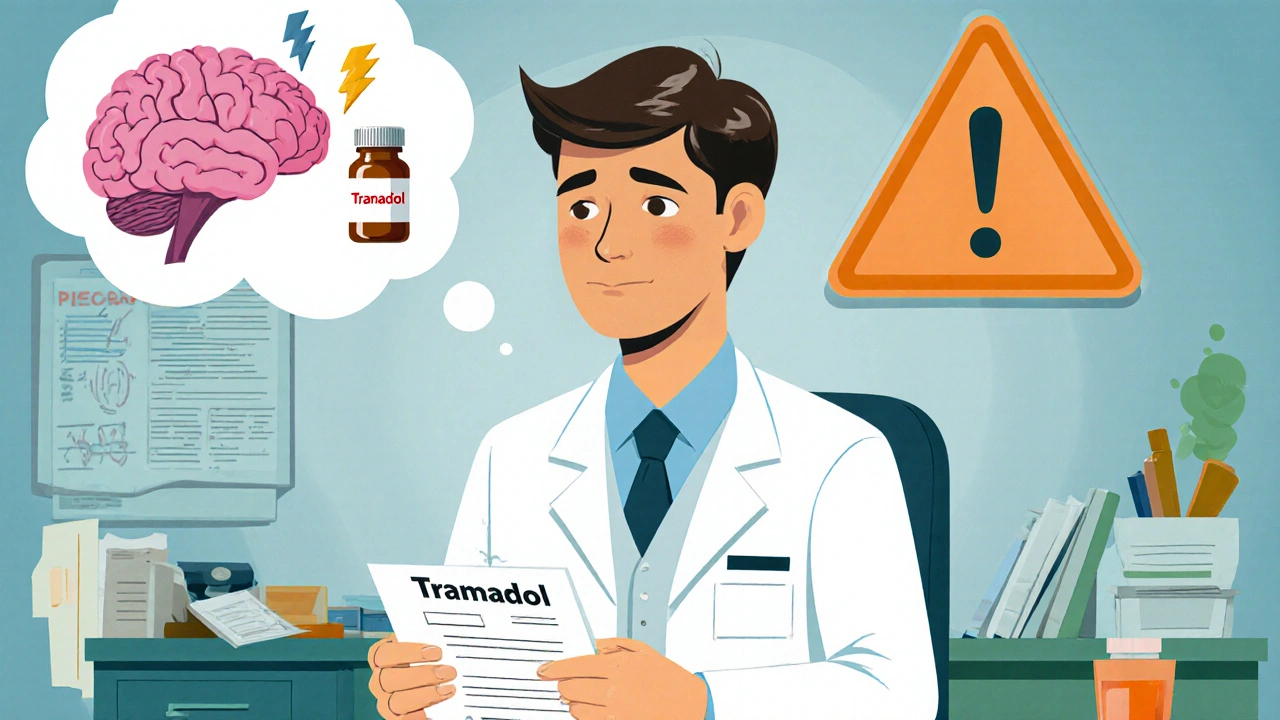Tramadol Seizure Risk
When talking about Tramadol seizure risk, the chance that tramadol use may trigger a seizure, particularly at high doses or with interacting medications. Also known as tramadol‑induced seizures, this risk is a key concern for anyone prescribing or taking the drug. Tramadol, a centrally acting synthetic opioid used for moderate to severe pain works by binding to µ‑opioid receptors and inhibiting the reuptake of serotonin and norepinephrine. Because of this mixed mechanism, it can lower the seizure threshold, especially when the dose climbs above the therapeutic range. Seizure, a sudden, uncontrolled electrical disturbance in the brain may appear as a brief twitch or a full‑blown convulsion, and the likelihood grows when the drug accumulates in the system. The relationship can be summed up in a simple triple: Tramadol seizure risk encompasses dose‑dependent seizure potential. Another clear link is: Opioid analgesics influence the brain’s excitability, thereby affecting seizure risk.
Key Factors that Shape the Risk
The biggest driver of tramadol seizure risk is dose. Studies show that patients taking more than 400 mg per day have a markedly higher chance of experiencing a seizure than those staying under 200 mg. However, it’s not just the amount you swallow; drug interactions, the way other medicines affect tramadol’s metabolism and central nervous system activity play a huge role. Combining tramadol with other serotonergic agents—like certain antidepressants (SSRIs, SNRIs), migraine treatments (triptans), or even over‑the‑counter cough syrups—can push serotonin levels too high, a situation sometimes called serotonin syndrome, which may trigger seizures. Patients with a personal or family history of epilepsy are also more vulnerable because their brains already have a lower seizure threshold. Age matters too: older adults often have reduced kidney or liver function, slowing tramadol clearance and increasing blood levels. Finally, genetic variations in the CYP2D6 enzyme can turn a standard dose into a high‑risk exposure for ultra‑rapid metabolizers.
Knowing these variables helps clinicians and patients take practical steps. Start at the lowest effective dose, and never exceed the prescribed limit without a doctor’s OK. Review every medication—prescription, over‑the‑counter, and herbal—to spot potential interactions. If you have a seizure disorder, discuss alternative pain relievers that don’t affect the seizure threshold. Monitoring is critical: watch for early warning signs like dizziness, confusion, or unusual tremors, and seek medical help right away if a seizure occurs. Regular follow‑up labs can catch elevated tramadol levels before trouble starts. By treating tramadol seizure risk as a manageable factor rather than a mystery, you can stay in control of pain relief while keeping safety front‑and‑center.
Below you’ll find a curated set of articles that dive deeper into each of these points—dose guidelines, interaction checklists, patient stories, and expert recommendations. Use them to build a clear picture of how to use tramadol responsibly and to recognize the signs that call for immediate action.
Tramadol Seizure Risk - Identifying High‑Risk Patients
- Laura Ledas
- Oct, 25 2025
Explore which patients face the highest tramadol seizure risk, from seizure history and CYP2D6‑inhibiting antidepressants to age‑related factors, and learn practical steps to keep them safe.
Learn More